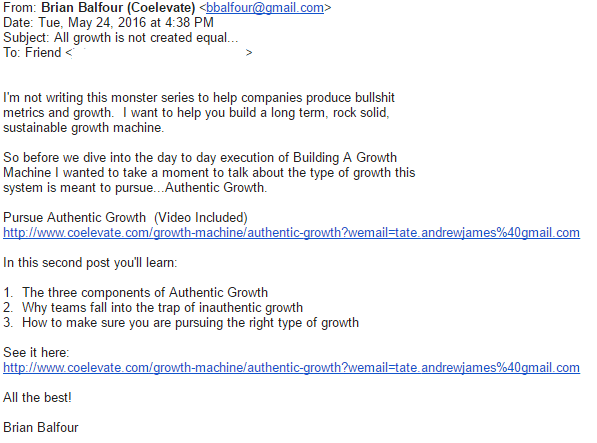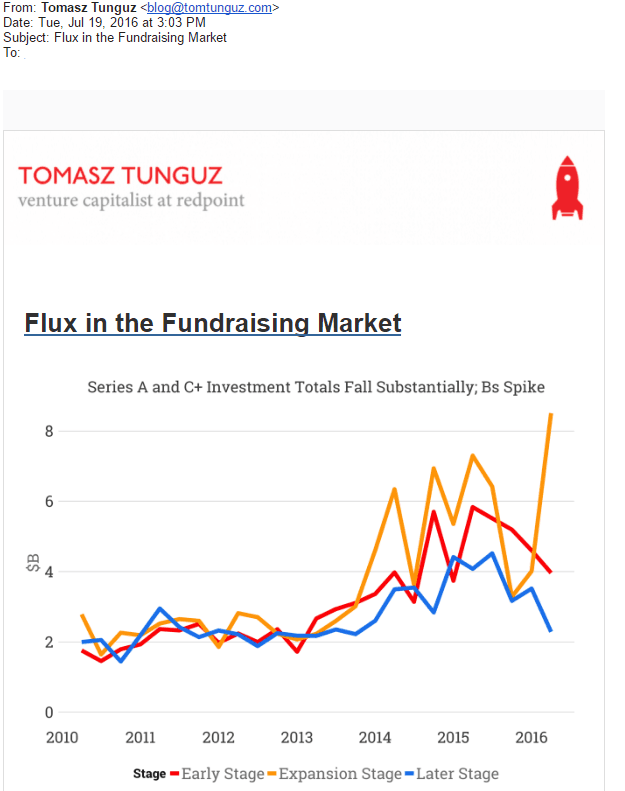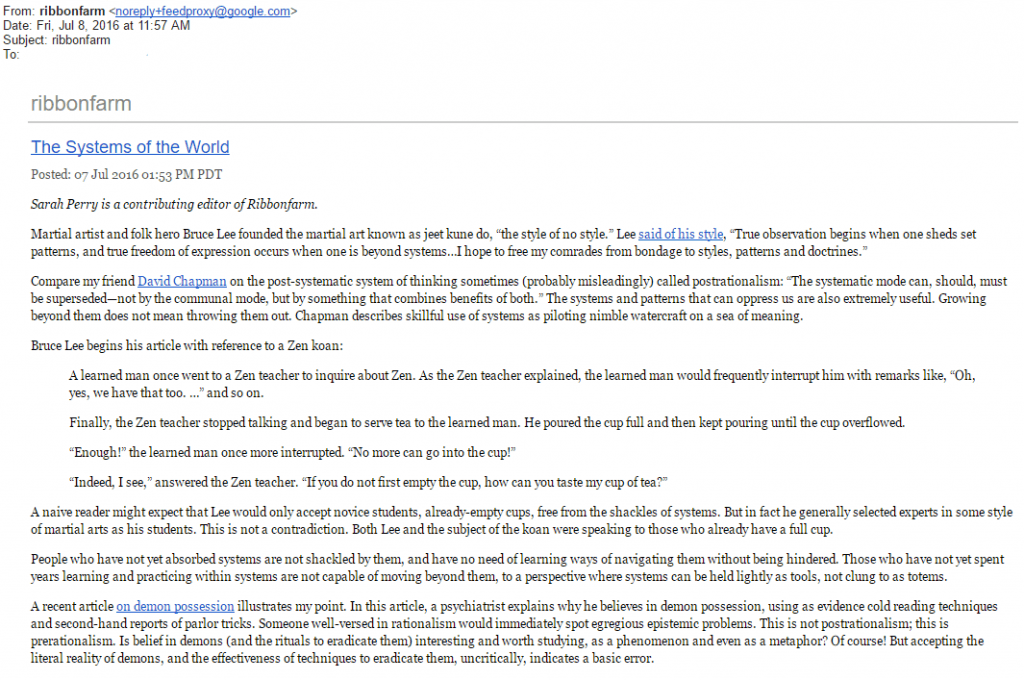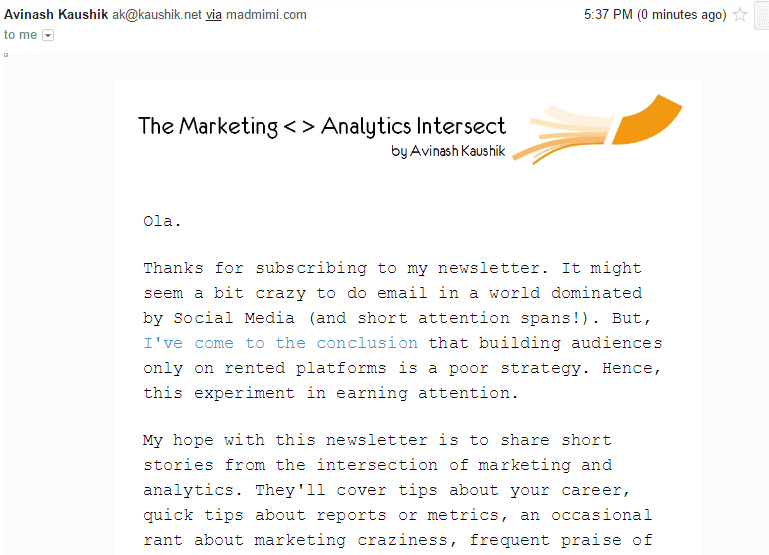5 Data-Driven Email Newsletters That Will Change How You Think About Analytics
Written by entrepreneurs, data scientists, growth marketers and venture capitalists, each one offers unique insight into the process of using data to make better decisions and build a better company.
Using data to build better products and companies is an ever-changing science. You have to always confront your assumptions and learn if you want to succeed. Whether you’re an industry veteran or starting from scratch, it always pays to get advice from the best of the best.
Subscribing to email newsletters written by experts on growth and analytics is a great way to build a habit around this kind of learning.
Here are five that stand out from the rest.
Written by entrepreneurs, data scientists, growth marketers and venture capitalists, each one offers unique insight into the process of using data to make better decisions and build a better company.
1. Coelevate: Growth & User Acquisition
Brian Balfour’s monthly essays, published on his blog Coelevate, contain some of the best writing out there on growth and user acquisition. Subscribers to his email list get them in their inbox once a month before they go up on the site.
Each essay dives into a part of his Scientific Method to growth and expands on how to implement each step.

Balfour is one of the most experienced growth experts in the industry. He was VP of Growth of HubSpot for two years, where he led teams working on projects like Sidekick. He’s started multiple companies and taken user bases into the millions with his GrowthHackers AMA sessions and presentations.
Today, Balfour and Andrew Chen (Growth at Uber) run the Reforge Growth Series to help product managers, marketers, engineers and others build growth frameworks for their own companies.
Using data for growth
In How To Run A Weekly Growth Meeting That Gets Results, Balfour details how he ran efficient weekly team meetings at HubSpot. H
is main points include:
- Make sure everyone comes to the meeting prepared
- Focus discussion on what you’ve learned rather than what happened throughout the week
- Don’t debate priorities—keep that in smaller groups
With growth always at the forefront, Balfour looks ahead by detailing what team meetings should look like once (not if) your team grows larger.
2. Tomasz Tunguz
Tomasz Tunguz, a partner at Redpoint Ventures, writes a daily newsletter that answers key questions facing startups with a focus on fundraising and startup benchmarks.
He uses data to address topics like when to scale up your sales team and how it’s getting more expensive for startups to find spaces in San Francisco.

Prior to joining Redpoint, Tunguz worked as the product manager for Google’s AdSense social media products and AdSense’s internationalization.
Currently, he focuses on software investments at Redpoint while investing in companies like Axial, Dremio, Expensify and Electric Imp.
Using data for sustainability
The Smallest ACV To Justify An Inside Sales Team At A SaaS Startup is a good example of how Tunguz uses data to come to powerful and actionable conclusions.
He breaks down every data point involved in having a sales team:
- Quotas
- Price points
- Salesperson productivity
- Bookings
- Cash investment
What you get is a rigorous and precise calculus designed to help you figure out exactly when it will make sense to have an inside sales team at your startup.
3. Ribbonfarm: Experiments In Refactored Perception
Venkatesh Rao’s weekly newsletter, Ribbonfarm, is devoted to something he calls refactored perception. That means everything from counter-intuitive takes on recent tech developments to theoretical musings on economy, politics and the general state of the world.
While a bit less straightforward, it’s still a great resource for expanding your horizons.
Rao began writing this long-form blog in 2007 and has since released two ebooks and Tempo, a book on decision-making. It brings mathematical decision sciences together with cognitive psychology to show how shaky assumptions underlie much of our daily thinking, and how to build stronger foundations for them.
Rao’s writing has been feature in _The Atlantic, Information Week and Forbes, and he also created a “binge-reading” site called Breaking Smart.

Those new to the topic can peruse an intro post. The blog has talked about the invention of intentions and visualizing sound, and also includes articles from contributing editor Sarah Perry and invited resident writers such as Artem Litvinovich.
Using data for theory
Every year, Ribbonfarm holds a Refactor Camp in which they discuss topics related to a theme. This year’s theme is Weird Political Economy. The focus is on how “things are getting weird” in global affairs with discussions on:
- The Weird State of the State
- The Weird State of Capitalism
- The Weird State of the Crowd
- The Weird State of the Earth
By the end of the event, the goal is to learn how to better adapt to succeed in the new state of the world.
4. Information is Beautiful
David McCandless created Information is Beautifulto share his passion for data visualization with the world.
Formatted as a monthly newsletter, Information is Beautiful distills massive datasets into beautiful, interesting, and useful visualizations.
While not specifically startup-related, Information is Beautiful constantly provides inspiring new ways to present data. Studying these diagrams can not only teach you something, but can also provide inspiration for presenting information in an engaging way:

In the past, McCandless has written for The Guardian and Wired and even had pieces exhibited at the Museum of Modern Art in New York. He is now working as an independent data journalist and information designer.
Using data for presentation
One of the best visualizations McCandless has produced showcases the world’s biggest data breaches:

This is a great example of how they take masses of data and include options to:
- Filter by organization or method of leak
- Compare by year or method of lead
- Visualize either number of records stolen or data sensitivity
By presenting the data in a way that’s easy to understand and filter, McCandless allows people to explore through massive sets of points and come to their own unique conclusions.
5. The Marketing < > Analytics Intersect
TMAI is a monthly newsletter written by Avinash Kaushik. Kaushik is the Digital Marketing Evangelist at Google, co-founder and CEO of Market Motive, which offers online marketing education courses, as well as the author of two best selling books, Web Analytics 2.0 and Web Analytics: An Hour A Day.
Some of Kaushik’s long-form emails get re-published on his blog, covering mistakes to avoid as an analyst and using your own skepticism to help make decisions.

Using data for decision-making
In his post Suck Less | A Plea For User-Centric Design: Powered By You! Kaushik talks about the common problem of spending too much time with your data and too little time with your users.
He goes through three companies with big user-experience issues:
- HTC had a check-out page that didn’t let you check out.
- United made purchasing in-flight internet almost impossible.
- Patagonia makes returning a product a marathon.
Go right to the data, Kaushik says, is a common knee-jerk response that many analysts might have to these problems. But the real issue for him is often rooted in a lack of dog-fooding. When companies don’t understand their users, no amount of data will help them satisfy those users. You can use data, Kaushik says, but look at your site first. Show it to strangers. Commission a user test. Find out everything you possibly can from a qualitative standpoint first, then use data to clarify and classify your insights.
There’s More Where That Came From
By subscribing to these blogs and newsletters, you are getting advice from the best of the best straight to your inbox. Data is your greatest resource and learning how to fully utilize it can push your company to new limits.
If you’re hungry for more data-driven content in your inbox, be sure to subscribe to the Amplitude blog for alerts on all of our new content.

Aditya Vempaty
Former Head of Marketing, Amplitude
As the former head of marketing at Amplitude, he had the privilege of hiring and leading a fantastic team of marketers, designers, and content folks to build a marketing engine that resulted in increasing revenues by 400% in 15 months.
More from Aditya




